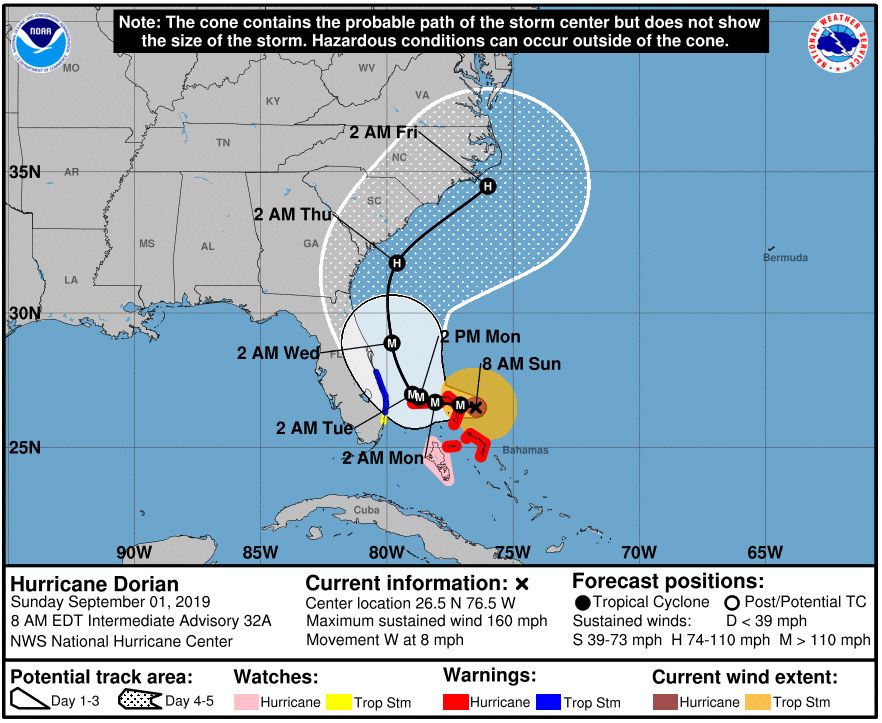On Wednesday, when President Donald Trump was showing off a doctored hurricane forecast in the White House Oval Office, forecasters at the National Hurricane Center were mortified.
It was a critical moment for the federal tropical cyclone experts because Hurricane Dorian had begun to show signs of re-intensifying—it would later become a major hurricane again—and its track appeared increasingly likely to bring the storm's center ashore somewhere in the Carolinas. Two sources in the Miami-based hurricane center told Ars that Trump's "update" on Hurricane Dorian effectively paralyzed operations.
After Trump spoke, the forecasters' cell phones buzzed with incessant distractions. Media briefings were stopped for the afternoon. "Precious hours were wasted," one official at the center told me. "We arent going to put out bad forecasts, but we need to keep the eye on the ball here."
Instead of warning residents of the Southeastern United States about a re-strengthening Dorian just as it posed its greatest threat to the nation, the media subsequently pivoted to cover Trump's preposterous attempt to re-write the history of Dorian's forecast. As an American, I felt embarrassed. As a meteorologist, I was livid.
The imbroglio began when Trump tweeted at 9:51am ET on Sunday, September 1, about Dorian: "In addition to Florida – South Carolina, North Carolina, Georgia, and Alabama, will most likely be hit (much) harder than anticipated. Looking like one of the largest hurricanes ever. Already category 5. BE CAREFUL! GOD BLESS EVERYONE!"
For the record, this is the official National Hurricane Center forecast in effect at that time, which had been issued at 5am ET Sunday and is updated every six hours:

Since Wednesday's briefing, the president has shared a number of maps on Twitter to back up his contention that Alabama really was threatened by Dorian.
For example, on Wednesday evening, he shared this spaghetti plot of models below on Twitter with the comment, "This was the originally projected path of the Hurricane in its early stages. As you can see, almost all models predicted it to go through Florida also hitting Georgia and Alabama. I accept the Fake News apologies!"

There are two whopping problems with these kinds of justification tweets from the president. First of all, the majority of model plots on this graphic were initialized at 8pm ET on Tuesday, August 27. The plot itself was published at 8:06am ET on Wednesday. This was four days before the president's tweet about Alabama being threatened. (Four days in a hurricane track forecast might as well be an eternity.)
The second problem with Trump's use of this plot is that it doesn't actually show the storm going anywhere near AlaRead More – Source







